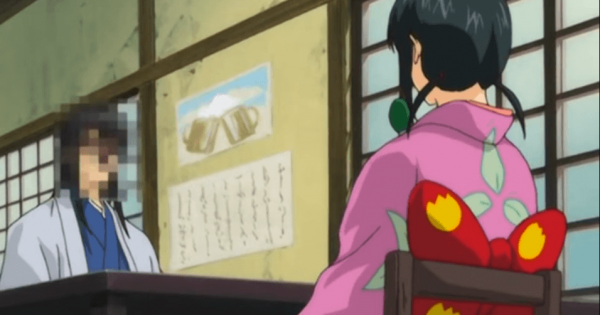Whales Anonymous: K-San

- Before reading, check out our first interview of a mobile game "whale" who plays Fate/Grand Order.
- We hope our talk with K-san can help our readers better understand who these players are.
- While our subjects may be anonymous, they are people.

So you are the anonymous residential whale, K-san right?


It’s not K-san, it’s Keripo


K-tsura-san then?


It’s not K-tsura-san, it’s Keripo


So K-san, tell us a bit about yourself and FGO.


I'm a hardcore TYPE-MOON fan who played FGO JP at launch (July 2015) and is currently playing FGO NA also since its launch (June 2017). In FGO JP, I was a pretty big whale as my goal back then was to obtain and max ascend every Servant, which I eventually did sometimes in Feb 2016 (as the first NA player to do so I believe) then quit shortly after. Went on hiatus for a while (playing Revelation Online) before coming back to play FGO NA after it was announced at Anime Expo 2016. For FGO NA, I play mainly for the story, which I can now read since it’s in English! My NA goal of max grailing Frankenwaifu is much less grand, so I’m a much smaller whale this time around (a dolphin maybe?). Outside of grinding events and EXP cards, I also enjoy theorycrafting and occasionally post various useful charts and guides on the FGO Reddit (such as NP damage charts, party setup guides, etc) as well as stream on Twitch or make YouTube videos from time to time. I’m also somewhat known for being a big advocate of Team Basaka. Also, Arcueid is mai waifu.


What games do you play? Of these games, in which games do you spend money? If you stopped spending money on a game, why?


In general, I play PvP-focused MMORPGs, with the last three that I played being Revelation Online, Black Desert Online, and Blade & Soul. With the exception of Guild Wars 2, all the MMOs I play happen to be F2P (free-to-play) but with aspects of P2P (pay-to-progress) or P2W (pay-to-win). Since I’m usually busy with work and have limited play time each day, I almost always inevitably end up spending a decent amount of money on these games, mainly just enough to keep up with my guildies and stay ahead/on top of the PvP curve. As such, the amount I spend depends entirely on what’s needed to stay competitive.
On the other hand, Fate/Grand Order was actually my very first mobile game and the first game I’ve played seriously that did not have a PvP aspect to it. The main reason I started playing FGO was because of it’s Fate universe setting. For FGO though, money spending wasn’t for the sake of competitiveness since there is none. Rather, I spent money as needed for the purpose of reaching my personal goals at that time, which at first started off as max ascending a specific Servant, then became collecting all the Servants, then eventually became max ascending all Servants.


Since our last Whale Anonymous interview, many readers are wondering how anyone could afford this level of spending in a game. Do you mind sharing a bit of your general background?


I work full time as a software developer for a large software development company. Like most of my comp sci classmates, I started working right after graduating from college with a six-figure income, so I’ve got a decent amount of disposable income. Moral of the story: stay in school, get an engineering degree, find a job, get waifus. As Itami from “Gate” would say, “I just work to support my hobby”.


What is your take on the monetization model in these games?


Game monetization is actually a topic that I take strong interest in (as a consumer) and have discussed at lengths with many different people (both fellow players as well as those working in the game industry) for various different games. So before I get into my thoughts on it, let’s step back a bit and take a look at why it’s needed and what kinds there are.
In a simplified model, game development involves two parties: the developer and the publisher. The developer (DelightWorks for example) is the game studio that creates the game. This includes the game engine, the graphical sprites, the promotional artwork, the sound effects, the voice overs, and much much more. Games usually take 1-3 years to make, sometimes even longer depending on the kind of game and the size of the studio. Lots and lots of people are involved from start to finish and put in tons of work and effort (especially in the game industry where long hours and weekend overtime is the norm), so as you would expect, the cost of development isn’t exactly a trivial amount. Once a game is done, it gets handed off to the publisher (Aniplex for example) who then takes care of promoting the game, running the game and, of course, figuring out the monetization model for the game. That monetization model needs to churn out enough money to cover the initial cost of development and marketing, the cost of maintaining the game servers, and of course a good margin of profit to keep the company running and growing so that there’s money available to invest into paying for future games or content updates. In other words, when a game launches with a monetization model, it’s not simply publishers just being greedy - part of it goes into cost recovery and future investments. If a publisher or game company doesn’t turn a profit, it stops making such kinds of games. Which means no more games like FGO for fans like us. A lose-lose situation. In other words, a truly free-to-play game simply cannot exist - monetization models are a necessary “evil” to ensure we get to play more and more fun games in the future.
With all that said, not all monetization models are equal. There are generally three popular types of monetization models for online games: 1) subscription-based (e.g. World of Warcraft), 2) one-time purchases (e.g Guild Wars 2 originally), and 3) microtransactions. Of the three, recent trends point to microtransactions being the most popular, both in mobile and desktop games. Why? Because most microtransaction games are “free”, and everyone loves free! Anyone can play it without having to spend a dime if they choose not to. But of course out of every 1000 free players, there will always be at least 1 who will be *willing* to spend a dime or more for all the snazzy in-game benefits. And unlike subscription-based and one-time purchase models, the *amount* of money one could spend is unlimited. More often than not, this amount will end up being far more than the amount one would have spent if it were a subscription-based game or one-time purchase. In fact, the amount those single players (often referred to as “whales”) will usually end up far exceeding the total amount multiple players would have spent through any of the other two monetization models. Instead of selling a single cosmetic item for $50 flat, for example, why not put it in an RNG box for $5 and watch as people spend far more than $50 trying to get it. Or put a rare waifu with a <1% roll chance in a gacha with no roll guarantees. This will usually upset a lot of people, but in the end, the wallets still come out. In fact, if you look at the revenue reports of any major game company over the past few years that sell both one-time purchase games as well as microtransaction-based games (EA, Ubisoft, NCSoft, etc.), you’ll very clearly see that revenue from things such as gacha rolls, loot boxes, DLCs, or other types of microtransactions drastically outperform other sources of revenue.
So in the end, most publishers end up going with the microtransactions monetization model for their games. These “free” games end up not being truly free. Someone inevitably pays for it and, while I personally dislike this model, due to my competitive/goal-driven nature, one of those people usually ends up being me. South Park actually had a pretty amusing (but accurate) episode on this.
tl;dr: Monetization models are necessary, but what type depends on the publisher. In today’s day and age, despite people’s hate against it, the microtransaction model ends up being the most profitable and will likely continue to be over the next few years.
Funny you mentioned South Park, because they just came out with a new mobile title with that exact business model…


Thoughts on how monetization is affecting gameplay? Do some games have a more balanced paid/F2P reward system?


This really depends on the monetization model used. For subscription models, balance is often taken very, very seriously as every paying customer pays the same amount, so there is a strong incentive to avoid pissing off any subset of customers by making certain players stronger than others. For one-time purchase models, balance isn’t all that important since the publishers have already gotten your money, but it is beneficial in that having an imbalanced game would be a negative strike on the game’s reputation and prevent potential customers from wanting to buy the game.
For microtransaction-based games, however, having an *imbalanced* game is actually a very important key to (financial) success. Only through constantly shifting the game balance can the publishers continue to convince players to spend money on newly released content. While this is not “good” for players, it unfortunately works very well and is quite profitable. For example, in FGO, if a new non-waifu Servant were released that didn’t introduce anything new and was the same as or weaker than any of the current Servants, no one would want to spend money on getting it. But if a new non-waifu Servant were released that broke existing game balance and drastically changed the game meta (*cough* Merlin *cough*), people would be highly incentivised to whip out that wallet and buy quartz. And because of this, I would almost say that the microtransaction-based monetization model is very strongly tied to gameplay. If it weren’t, why would people bother spending money? And yes, I wish the answer to this was simply “cosmetics only”, but the truth is, breaking gameplay balance makes a lot more money than new cosmetics.


What makes it worth spending money in these games? Do you have any big spendings that you have come to regret?


The word “worth” is a very, very subjective term and differs drastically from person to person. Say you had $50. To some, spending that $50 to get premiere tickets to see the latest superhero movies or some private showing is “worth”. To some, spending that $50 to treat yourself to a nice restaurant dinner is “worth”. To some, spending $50 to pick up that fancy bottle of sake you’ve been eyeing for a long while and drink it all by yourself is “worth”. To some, spending $50 on a Nendoroid of your favourite anime character is “worth”. And to some, spending $50 to buy a Google Play/iTunes gift card to buy quartz for trying to roll your waifu with is “worth”. Admittedly, there was a point in my life where I would look at the price tag of a grocery item and think to myself, “I could buy X gacha rolls with this...”.
Personally, “worth” is defined to me as “was it effective in reaching my goal/objective”. For FGO, for example, my goal was to collect and max ascend every Servant, which would mean I would undoubtedly end up spending money each time a new Servant was released (until I called quits). That said, not all my spendings felt “equal” to me and there were definitely some instances which I came to “regret”. The biggest was probably the Scathach/Medea Lily gacha in FGO JP. For prior gachas, I had decently good luck and actually obtained the hero at a lower-than-statistically-expected costs. I wasn’t much of a fan of Scathach’s character design nor her skillset (I still believe to this day that they accidentally swapped the hit count for her Buster and Quick, but decided to leave it like that for balance reasons), but I was hell bent on getting Medea Lily. Medea Lily was an exceptional healer, fulfilling a role that was up til then completely vacant, and I was convinced that I could create a completely new (but impractical) “Team Unkillable” meta/joke composition with her at NP5.
As it turned out, my RNG luck that night was absolutely terrible and I spent around $3000 before finally rolling her at NP1 (and then got Scathach one or two rolls later, but I was too dead inside at that point to care). To add insult to injury, a few months later, Irisviel was introduced as a “welfare unit” (aka free event unit that you could NP5 for free) and was a drastically superior version of Medea Lily. Sure, getting Medea Lily and Scathach was necessary for my 100% max ascended Servants goal, but having spent so much on “useless” Servants was a pretty shitty feeling. Was it “worth”? I dunno, but in hindsight I would not want to do that again.


What is your perspective on being a known whale? Has that perception affected you positively/negatively in any way?


Not much at all, to be very honest. Part of this is probably because of my prior MMO experience. In almost every MMO I played, I was one of the top PvPers or a member/officer/leader of a top PvP guild, sometimes even without spending any money on the game. And part of the PvP culture is high toxicity and drama, which I’ve grown quite immune to over time (aka to survive in a hostile PvP environment, you need to be very thick skinned).
For FGO, I’ve definitely seen my share of haters mixed in with fans, but it has never really bothered me, especially given that FGO is essentially a “single player” game with next to zero player-to-player interactions. I also tend to be a very logical and analytical type of person, so what people think of me has little bearing or influence on what I do and what choices I make. What some random person on the internet thinks of me (be it envy, jealousy or admiration) wasn’t exactly going to stop me from continuing working towards my personal goals or sharing my knowledge to the public. Rather, in some cases, being well known was beneficial in the fact that it allowed for more exposure and credibility for the informative posts and guides that I would occasionally post on Reddit.


Bizarre whaling adventures/experiences?


As mentioned earlier, on JP, I spent around $3000 before I managed to get Scathach and Medea Lily. On NA, however, I managed to get Scathach in my first batch of quartz rolls. I wasn’t originally planning on getting her at all (since I have no plans on catching-them-all on NA like I did on JP) but I ended up impulse rolling with the quartz I had on-hand anyway and got lucky. Was a pretty dumbstruck moment when it happened. And yes, I stopped rolling after that - no more Medea Lily shenanigans again!


Parting words?


Know your limits, roll within it.
Each and every individual comes from different backgrounds with different amounts of disposable income, different goals, and different definitions of “worth”. Figure out for what and why you play games. For competition? For completion? For lore and story? For waifu? Or just for plain fun? Once you know that, only then can you decide how much a gacha roll is worth to you.







